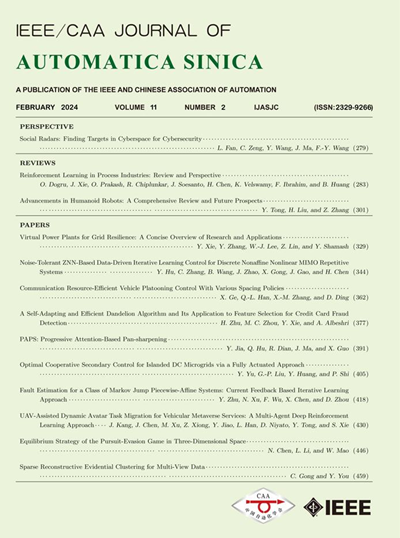演化昂贵大规模多目标优化的变量重构及其在气动设计中的应用
IF 19.2
1区 计算机科学
Q1 AUTOMATION & CONTROL SYSTEMS
引用次数: 0
摘要
昂贵的多目标优化问题(EMOPs)是现实应用中的复杂优化问题,其中每个目标函数评估(FE)都涉及昂贵的计算或物理实验。许多代理辅助进化算法(saea)被设计用于解决emop问题。然而,具有大规模决策变量的emop对现有的saea来说仍然是一个挑战,导致难以保持收敛和多样性。为了解决这一缺陷,我们提出了一种基于变量重构的SAEA (VREA)来平衡收敛性增强和多样性保持。通常,基于聚类的变量重构策略是将原始的大规模决策变量重构为低维权重变量。因此,在代理模型的帮助下,通过优化低维权重变量,可以将种群快速推向帕累托集(PS)。基于聚类的变量重构策略提高了种群多样性。提出了一种自适应搜索步长策略,以进一步平衡探索和开发。在具有多达1000个决策变量和气动设计任务的基准emop上,对四种最先进的saea进行了实验比较。实验结果表明,在有限的实际FEs条件下,VREA得到了收敛性良好的多元解。本文章由计算机程序翻译,如有差异,请以英文原文为准。
Variable Reconstruction for Evolutionary Expensive Large-Scale Multiobjective Optimization and Its Application on Aerodynamic Design
Expensive multiobjective optimization problems (EMOPs) are complex optimization problems exacted from real-world applications, where each objective function evaluation (FE) involves expensive computations or physical experiments. Many surrogate-assisted evolutionary algorithms (SAEAs) have been designed to solve EMOPs. Nevertheless, EMOPs with large-scale decision variables remain challenging for existing SAEAs, leading to difficulties in maintaining convergence and diversity. To address this deficiency, we proposed a variable reconstruction-based SAEA (VREA) to balance convergence enhancement and diversity maintenance. Generally, a cluster-based variable reconstruction strategy reconstructs the original large-scale decision variables into low-dimensional weight variables. Thus, the population can be rapidly pushed towards the Pareto set (PS) by optimizing low-dimensional weight variables with the assistance of surrogate models. Population diversity is improved due to the cluster-based variable reconstruction strategy. An adaptive search step size strategy is proposed to balance exploration and exploitation further. Experimental comparisons with four state-of-the-art SAEAs are conducted on benchmark EMOPs with up to 1000 decision variables and an aerodynamic design task. Experimental results demonstrate that VREA obtains well-converged and diverse solutions with limited real FEs.
求助全文
通过发布文献求助,成功后即可免费获取论文全文。
去求助
来源期刊

Ieee-Caa Journal of Automatica Sinica
Engineering-Control and Systems Engineering
CiteScore
23.50
自引率
11.00%
发文量
880
期刊介绍:
The IEEE/CAA Journal of Automatica Sinica is a reputable journal that publishes high-quality papers in English on original theoretical/experimental research and development in the field of automation. The journal covers a wide range of topics including automatic control, artificial intelligence and intelligent control, systems theory and engineering, pattern recognition and intelligent systems, automation engineering and applications, information processing and information systems, network-based automation, robotics, sensing and measurement, and navigation, guidance, and control.
Additionally, the journal is abstracted/indexed in several prominent databases including SCIE (Science Citation Index Expanded), EI (Engineering Index), Inspec, Scopus, SCImago, DBLP, CNKI (China National Knowledge Infrastructure), CSCD (Chinese Science Citation Database), and IEEE Xplore.
 求助内容:
求助内容: 应助结果提醒方式:
应助结果提醒方式:


